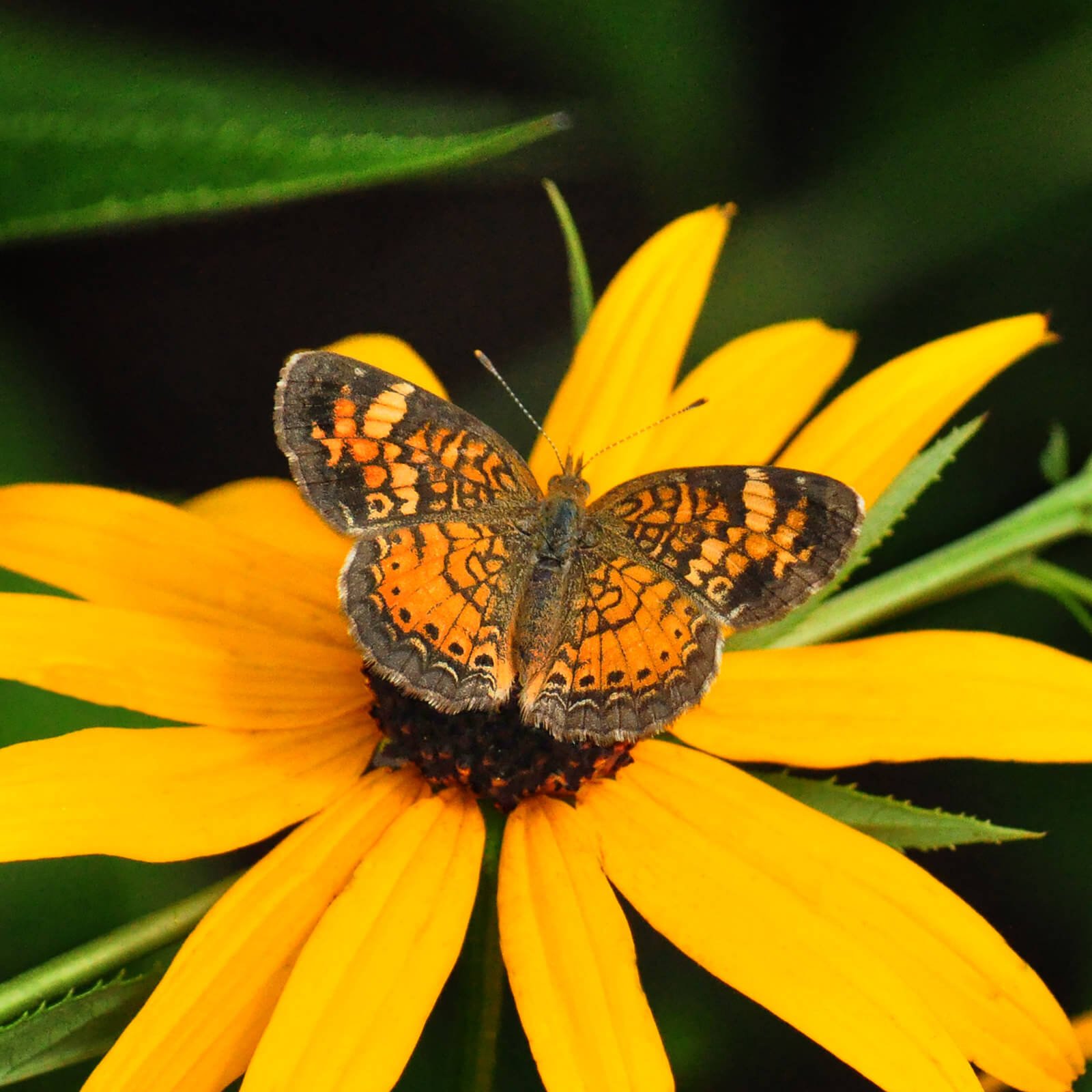Life Cycle: Perennial
Sun Exposure: Full, Partial, Shade
Soil Moisture: Medium-Wet, Medium, Medium-Dry
Height: 3 feet
Plant Spacing: 2-3 feet
Bloom Time: September-October
Bloom Color: White
Advantages: Caterpillar Favorite, Pollinator Favorite, Bird Favorite
Host Plant: Pearl Crescent and 43 other species of butterflies and moths in our area (illnoiswildflower.info)
Species of Concern: State Status: Threatened (legally protected). State Rank: Imperiled (mnfi.anr.msu.edu)
Specialist Bee: Andrena asteris, Andrena asteroides, Andrena hirticincta, Andrena nubecula, Andrena solidaginis, and Colletes simulans armata. (illnoiswildflower.info)










